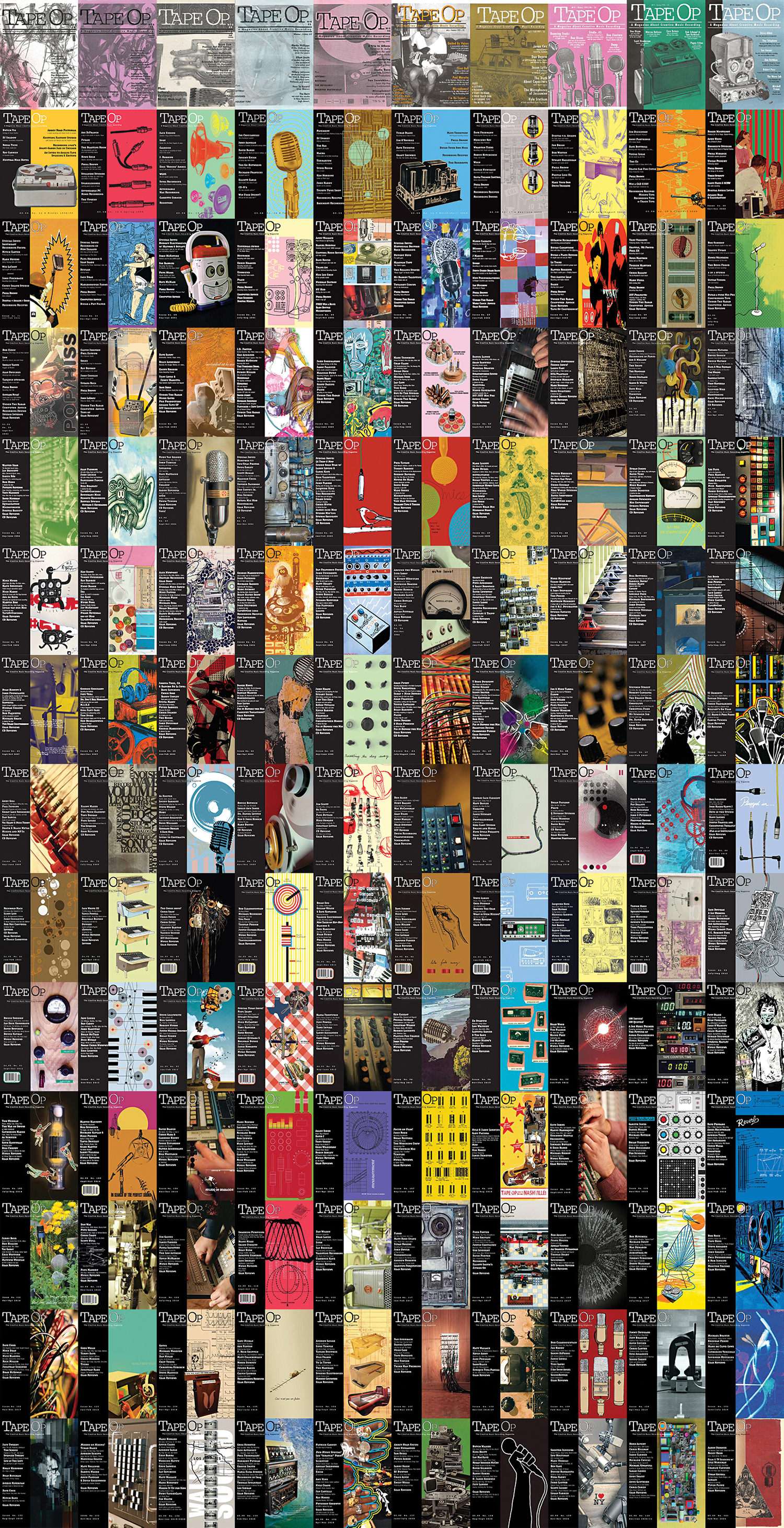One of the most esteemed names in the world of audio production, TELEFUNKEN, has released a new and exciting product in their Alchemy line of microphones: the TF11. I was beyond excited to test out their newest offering.
The TF11 is a large diaphragm FET condenser microphone designed and hand-assembled in the USA. It’s a cardioid only mic with a small footprint (less than seven inches high and two inches wide). Despite its smaller size, the weight and sturdiness immediately inform that you’re holding an extremely well-built piece of equipment. The TF11’s dark blue body is brushed, adding to the mic’s amazing feel. The Austrian-style discrete Class A JFET amplifier design is voiced similarly to the C12, allowing the TF11 to handle high SPLs with a low noise floor, and includes a UK-made Carnhill transformer. The CK12-style edge-terminated capsule is a single-membrane version of the TF51’s [Tape Op #134]. The mic comes with a sturdy shock mount, case, stand mount, and sleeve. The included M703 shock mount is among the best I’ve used – lightweight, small enough to fit in most spots, and retains its position.
I noticed two traits right away that stood true on every source I put the TF11 in front of: a boost in the high end (a smaller bump around 5 kHz and a larger one near 8.5 kHz) and tight, natural lows between 100 and 200 Hz. This microphone is far from boomy, partly because it starts to roll off around 100 Hz. I found that running it into a Neve-style or tube preamp (like my Universal Audio 2-610 [Tape Op #27]) produced a round quality that sits easily in the mix without muddying anything up.
I used the TF11 for several different vocal sessions and was super pleased with its versatility. I was especially impressed with it on lead vocals for female-identifying singers with lower registers, lead for male-identifying performers with midrange registers, and backing vocals for male-identifying vocalists in many registers. Because of how tight and natural it is in the 100 to 200 Hz range, it worked well when stacking doubles and harmonies on top of each other – full and rich without clogging up space for the lead, kick, bass, synths, or anything else that might occupy the low end. At times, the brightness in the high end caused the vocals to cut through the mix a little too much, but not in a harsh or brittle way. I found that the slightest EQ adjustments helped in these cases without taking away from the clarity.
Of all the sources I mic’d with the TF11, my favorite application was for drums and percussion. It consistently found itself right in the middle of the kit (at the “crotch” position) – with the capsule above the kick by about eight inches, closer to the resonant head, facing and angled towards the bottom of the snare. Here, the tightness in the low end and the brightness in the top end brought the drums forward in the mix without any EQ or compression. I used it in this position for some neo-soul, R&B, and pop tracking sessions, shocking the client each time when A/B’ing the drums with and without the TF11. For me, it’s worth twice the price just for this use! It also held its own as a mono overhead, in front of the resonant head of the kick, hand percussion, and as a room mic with jazzier, more controlled drummers.
I enjoyed using it for acoustic instruments that needed to cut through the mix. It might not be the mic I reach for if I need a deeper sounding guitar or string section, but when used near the soundhole for more rhythmic playing, it worked extremely well. TELEFUNKEN did something wonderful with this microphone, and it didn’t take long for me to start reaching for the TF11 over other large-diaphragm mics in my locker. It’s flexible, natural, bright, and has a huge dynamic range. I’m excited to keep exploring with this mic!




_disp_horizontal_bw.jpg)